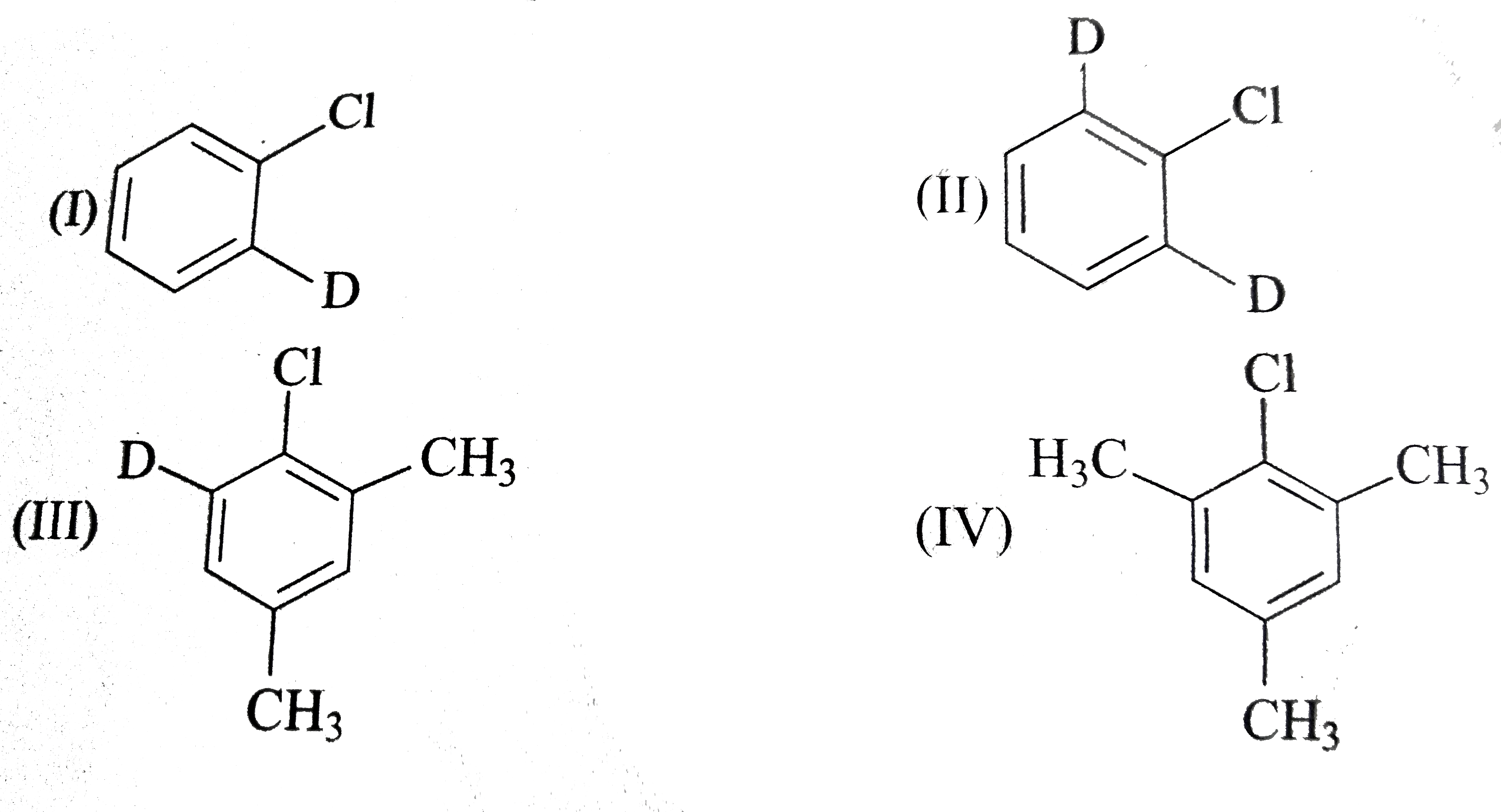Which of the following easily undergo nucleophilic substutition by SN1 mechanism in butanol
C6H5CH2Br
BrCH2CH=CH2
(CH3)3CBr
(CH3)3CCH2Br
The correct Answer is:A, B, C, D
To determine which compound undergoes nucleophilic substitution by the SN1 mechanism in butanol, we need to analyze the stability of the carbocations formed during the reaction. The SN1 mechanism involves the formation of a carbocation as an intermediate, and the rate of the reaction is dependent on the stability of this carbocation.
1. Identify the Compounds:
We have four options to analyze:
- Option 1: pH CH2 Br (Bromomethane)
- Option 2: Br CH2 CH=CH2 (Allyl bromide)
- Option 3: Carbon with Br and 3 methyl groups (Tertiary bromide)
- Option 4: Carbon with CH2 Br and 3 CH3 on this carbon (Tertiary bromide)
2. Determine Carbocation Formation:
- Option 1: When bromomethane undergoes nucleophilic substitution, it forms a primary carbocation (CH3-CH2^+), which is not very stable.
- Option 2: Allyl bromide forms a secondary carbocation (CH2=CH-CH2^+), which can be stabilized by resonance but is still not as stable as a tertiary carbocation.
- Option 3: The tertiary bromide forms a tertiary carbocation (R3C^+), which is highly stable due to hyperconjugation and inductive effects from the three methyl groups.
- Option 4: This also forms a tertiary carbocation (R3C^+), which is equally stable as in Option 3.
3. Evaluate Stability:
- The stability of carbocations increases in the following order: primary < secondary < tertiary.
- Options 3 and 4 both lead to the formation of a tertiary carbocation, which is the most stable.
4. Conclusion:
- Since the SN1 mechanism is favored by the formation of stable carbocations, the compounds in Options 3 and 4 will easily undergo nucleophilic substitution via the SN1 mechanism due to the stability of their respective tertiary carbocations.
Final Answer:
The compounds that easily undergo nucleophilic substitution by the SN1 mechanism in butanol are Option 3 and Option 4.
We have four options to analyze:
- Option 1: pH CH2 Br (Bromomethane)
- Option 2: Br CH2 CH=CH2 (Allyl bromide)
- Option 3: Carbon with Br and 3 methyl groups (Tertiary bromide)
- Option 4: Carbon with CH2 Br and 3 CH3 on this carbon (Tertiary bromide)
- Option 1: When bromomethane undergoes nucleophilic substitution, it forms a primary carbocation (CH3-CH2^+), which is not very stable.
- Option 2: Allyl bromide forms a secondary carbocation (CH2=CH-CH2^+), which can be stabilized by resonance but is still not as stable as a tertiary carbocation.
- Option 3: The tertiary bromide forms a tertiary carbocation (R3C^+), which is highly stable due to hyperconjugation and inductive effects from the three methyl groups.
- Option 4: This also forms a tertiary carbocation (R3C^+), which is equally stable as in Option 3.
- The stability of carbocations increases in the following order: primary < secondary < tertiary.
- Options 3 and 4 both lead to the formation of a tertiary carbocation, which is the most stable.
- Since the SN1 mechanism is favored by the formation of stable carbocations, the compounds in Options 3 and 4 will easily undergo nucleophilic substitution via the SN1 mechanism due to the stability of their respective tertiary carbocations.
The compounds that easily undergo nucleophilic substitution by the SN1 mechanism in butanol are Option 3 and Option 4.
Topper's Solved these Questions
- HALOGEN CONTAINING COMPOUNDBOOK - ERRORLESS CHAPTER - HALOGEN CONTAINING COMPOUNDEXERCISE - Critical Thinking (Reasoning type Questions)
2 Videos
- HALOGEN CONTAINING COMPOUNDBOOK - ERRORLESS CHAPTER - HALOGEN CONTAINING COMPOUNDEXERCISE - Critical Thinking (Comprehension type Questions)
6 Videos
- HALOGEN CONTAINING COMPOUNDBOOK - ERRORLESS CHAPTER - HALOGEN CONTAINING COMPOUNDEXERCISE - Ordinary Thinking Objective Question (Uses of Halogen containing compounds)
22 Videos
- GENERAL ORGANIC CHEMISTRYBOOK - ERRORLESS CHAPTER - GENERAL ORGANIC CHEMISTRYEXERCISE - Matrix Match type questions
4 Videos
- HYDROCARBONBOOK - ERRORLESS CHAPTER - HYDROCARBONEXERCISE - JEE SECTION (Matrix Match type questions)
6 Videos
Similar Questions
Knowledge Check
Which of the following easily undergo nucleophilic substutition by SN1 mechanism in butanol
AC6H5CH2BrBBrCH2CH=CH2C(CH3)3CBrD(CH3)3CCH2BrWhich of the following undergoes nucleophilic substitution exclusively SN1 mechanism?
ABenzyl chlorideBEthyl chlorideCChlorobenzeneDIsopropyl chlorideWhich of the following undergoes nucleophilic substitution exclusively bySN1 mechanism ?
ABenzyl chlorideBEthyl chlorideCChlorobenzeneDIsopropyl chloride,
Which of the following haloakane undergoes nucleophilic substitution reaction by SN2 mechanism only
View SolutionWhich of the following undergoes nucleophilic substitution exclusively by SN1 mechanism?
View SolutionWhich of the following compound undergo nucleophilic substitution faster?
View SolutionWhich of the following will not undergo nucleophilic aromatic substitution ?

View SolutionWhich one of the following compounds most radily undergoes substitution by SN2 mechanism?
View Solution
